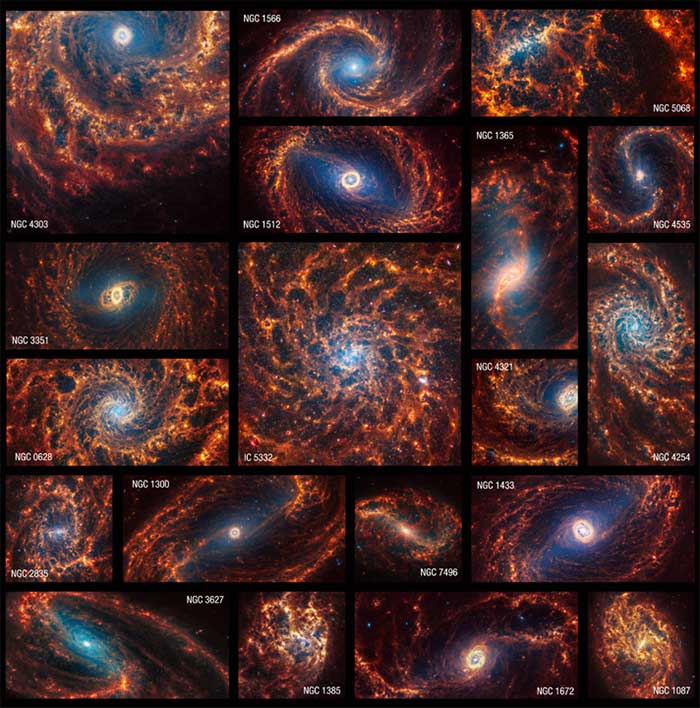The James Webb Space Telescope has captured stunning images, revealing remarkable details about 19 spiral galaxies located relatively close to the Milky Way. These images provide new insights into star formation, as well as the structure and evolution of galaxies.

A mosaic of 19 JWST images of spiral galaxies. (Photo: space.com)
These impressive images were compiled by a team of scientists from the Physics at High Angular Resolution in Nearby Galaxies (PHANGS) project, which gathered data from several major observatories and published their findings on January 29. The closest galaxy to Earth among the 19 is named NGC 5068, located about 15 million light-years away, while the farthest is NGC 1365, approximately 60 million light-years from Earth. A light-year is the distance light travels in a year, equivalent to about 9.5 trillion kilometers.
The James Webb Space Telescope was launched into space in 2021 and began collecting data in 2022. The images obtained have reshaped our understanding of the early universe and captured breathtaking photographs of the cosmos.
Among the galaxies, the most common type is the spiral galaxy, resembling gigantic pinwheels. Our Milky Way is one such galaxy, notably containing the Sun.
The aforementioned images were captured by James Webb using the Near Infrared Camera (NIRCam) and the Mid-Infrared Instrument (MIRI). The data reveal around 100,000 star clusters and millions, possibly billions, of individual stars within the Milky Way.
Astronomer Thomas Williams from the University of Oxford (UK), who leads the data processing team for the images, stated: “These data are crucial because they provide us with a new perspective on the earliest stages of star formation.”
Moreover, these images allow scientists to understand for the first time the detailed structure of the clouds of dust and gas from which stars and planets form in galaxies.
Astronomer Janice Lee from the Space Telescope Science Institute in Baltimore (USA) commented: “These images are not only aesthetically impressive but also tell a story about the cycle of star formation and feedback, which involves the energy and momentum released by young stars into the interstellar space.”





















































